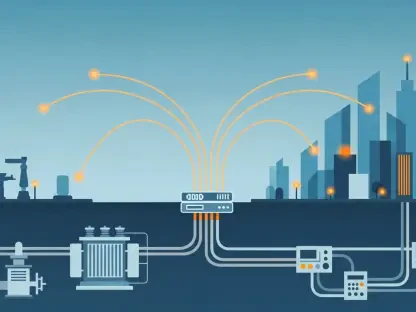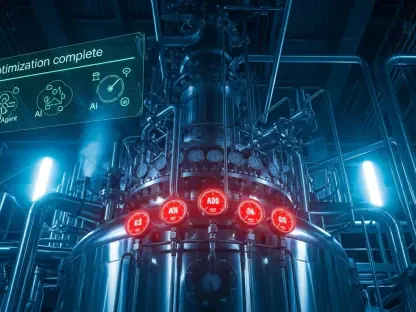New analysis reveals more than 500 facilities across the United States and Puerto Rico could be eligible for exemptions from Clean Air Act regulations, leading environmental groups and nearby communities to raise serious health and environmental concerns. These potential exemptions, publicized by the Environmental Defense Fund (EDF) and the US Environmental Protection Agency (EPA), pertain to various stationary air pollution sources, including chemical manufacturing plants, power plants, and metal smelters. The implications of these exemptions are especially significant for vulnerable communities and have spurred considerable debate among industry representatives, lawmakers, and advocacy organizations.
Revealing the Exemptions
The EDF’s analysis identifies over 500 facilities that might qualify for exemptions from the Clean Air Act regulations, raising alarms among environmental advocates and communities situated near these facilities. These facilities include chemical manufacturing plants, power plants, and metal smelters, all of which represent significant sources of stationary air pollution. The analysis follows prior requests by chemical and oil companies seeking exemptions from federal air pollution limits. The requests underscore ongoing tension between industrial economic interests and public health.
The identification of these potential exemptions has prompted environmental advocacy groups and affected communities to contest the relaxation of Clean Air Act standards. The exemptions have the potential to undermine the progress made in reducing air toxics and safeguarding public health. Advocates argue that the move could reverse crucial protections, increasing the pollution burden on already vulnerable populations and ecosystems.
Targeting the HON Rule
A significant number of the facilities identified by the EDF’s analysis could be linked to exemptions from the Hazardous Organic NESHAP (HON) rule. This rule aims to limit emissions of air toxics, including known or suspected carcinogens such as ethylene oxide and chloroprene. Enacted by the Biden administration in 2024, the HON rule has been pivotal in regulating harmful compound emissions from industrial sources, with the goal of protecting public health.
The proposition to exempt certain facilities from the HON rule has evoked concerns about elevated cancer risks and other health hazards for nearby communities. These compounds have well-documented associations with serious health issues, and the potential exemptions threaten to increase the exposure levels for residents living in proximity to these facilities. This development underscores the broader struggle between regulatory efforts to limit toxic emissions and industrial interests seeking relief from compliance costs and operational constraints.
Impact on Chemical Manufacturing Plants
The EDF’s comprehensive analysis highlights 218 chemical manufacturing plants, with a significant concentration of such facilities located in Louisiana and Texas. These states have historically been hotspots for heavy industrial activity, and the prospective exemptions from the HON rule could have profound implications for local environmental conditions. The potential for increased emissions from these plants has resulted in mounting fears about the exacerbation of pollution and associated health impacts.
Vickie Patton, general counsel at the EDF, expresses grave concerns about the possible public health risks, emphasizing the administration’s perilous approach toward national pollution limits. “This new analysis shows that Administrator Zeldin’s reckless and dangerous invitation for industrial sources to evade compliance with national pollution limits on the most toxic contaminants puts millions of Americans in harm’s way,” she states, stressing the urgency of maintaining stringent oversight on pollutant emissions.
Broad Scope of Potential Exemptions
In addition to the chemical manufacturing plants affected by the HON rule, the EDF’s analysis notes a total of 532 facilities producing hazardous air emissions under various Clean Air Act regulations that have been exposed to the possibility of presidential exemptions as of March 24. The breadth of these exemptions has further intensified opposition from advocacy groups and surrounding communities, who actively challenge the easing of these regulatory standards.
A joint letter submitted by the American Chemistry Council (ACC) and the American Fuel & Petrochemical Manufacturers (AFPM) underscores the industry’s stance on the HON rule. They request a two-year exemption from the HON rule, citing the substantial compliance costs and timelines as unworkable. The industry contends that the HON rule exceeds the EPA’s statutory authority, disregards relevant scientific evidence, and overlooks practical concerns, making compliance efforts both financially and operationally untenable.
Louisiana’s “Cancer Alley” in Focus
Among the facilities flagged for potential exemptions from the HON rule, several are situated within Louisiana’s second congressional district, commonly referred to as “Cancer Alley” due to its high concentration of petrochemical plants and correlated elevated cancer risks. Representing this district, Rep. Troy Carter Sr. has strongly condemned the potential exemptions, emphasizing the long-standing environmental burdens his constituents endure. Carter’s criticism reflects a prevailing sentiment among communities disproportionately affected by industrial pollution.
A notable facility highlighted in the EDF report is the Denka Performance Elastomer plant in LaPlace, Louisiana. This plant has been at the center of environmental and legal scrutiny due to the significant cancer risks it poses to nearby populations. Although the EPA pursued a lawsuit against Denka under the Biden administration, the agency dropped the suit in early March, triggering controversy and concern among environmental advocacy groups and residents.
Concentration in Texas
Texas houses the highest number of petrochemical manufacturers potentially eligible for exemptions, spotlighting the state’s considerable industrial base. The EDF analysis identifies 80 facilities in Texas that could receive exemptions from Clean Air Act regulations, including 28 plants in the state’s 14th congressional district and 23 in the 36th district. Despite the substantial implications of these exemptions, representatives Randy Weber and Brian Babin have not provided comments on the matter, leaving their positions on the issue unclear.
The concentration of these facilities in Texas underscores the state’s prominent role in nationwide industrial activities. However, the exemptions could pose significant health and environmental risks for local communities, exacerbating pollution levels in areas already grappling with substantial industrial emissions. Advocacy groups continue to press for greater accountability and transparency from both lawmakers and the EPA regarding these contentious exemptions.
Unique Exemption Requests
Beyond the chemical and petrochemical sectors, other facilities are seeking exemptions from notable air pollution regulations. One such facility is the Colstrip coal-burning power plant in Montana, which has applied for an exemption from the Mercury and Air Toxics Standards (MATS) rule. The MATS rule limits emissions of mercury and other hazardous air pollutants, making it crucial for protecting public health. Colstrip’s application for exemption is particularly concerning given its position as the top emitter of fine particulate matter pollution nationwide.
The possibility of exemptions for diverse industrial operations such as coal-burning power plants underscores the broader scope of regulatory relaxations from Clean Air Act standards. The ramifications of such exemptions are profound, potentially increasing pollutant emissions across various sectors and intensifying public health risks. The ongoing debate reflects a crucial balance between industrial operational flexibility and the necessity for rigorous environmental protections.
Exemptions Under the Clean Air Act
Section 112 of the Clean Air Act permits the president to grant temporary exemptions to stationary sources of air pollution for up to two years, with the possibility of renewal. This provision has emerged as a central point of controversy, with some stakeholders arguing that the exemptions compromise environmental integrity and public health standards. In response to inquiries about the timeline for deciding on these exemptions, White House assistant press secretary Taylor Rogers emphasized the administration’s commitment to boosting American energy production, protecting national security interests, and ensuring environmental stewardship. However, specific details regarding the exemption decisions remain undisclosed.
The nine regulations from which companies can apply for exemptions include the HON rule, the MATS rule, the Sterilizer rule, the Rubber Tire rule, the Copper rule, the Iron and Steel rule, the Lime rule, the Coke Ovens rule, and the Taconite rule. Collectively, these rules aim to limit emissions of various hazardous air pollutants, including benzene, toluene, hydrogen chloride, chlorine, ethylene oxide, mercury, chloroprene, and polycyclic aromatic hydrocarbons. Adherence to these standards also reduces emissions of toxic metals like lead and arsenic, thereby curbing associated health risks.
Industry Versus Environmental Protection
A recent analysis has revealed that over 500 facilities across the United States and Puerto Rico might qualify for exemptions from Clean Air Act regulations. This situation has prompted environmental groups and adjacent communities to voice acute health and environmental concerns. The Environmental Defense Fund (EDF) and the US Environmental Protection Agency (EPA) have brought attention to these possible exemptions, which involve different stationary air pollution sources such as chemical manufacturing plants, power plants, and metal smelters. These exemptions carry serious implications, particularly for vulnerable communities, and have ignited intense discussions among industry leaders, lawmakers, and advocacy organizations. The core issue revolves around balancing economic interests and public health, making the debate especially fervent. As a result, there is considerable uncertainty about the long-term impact on both the environment and the well-being of those living near these facilities.









